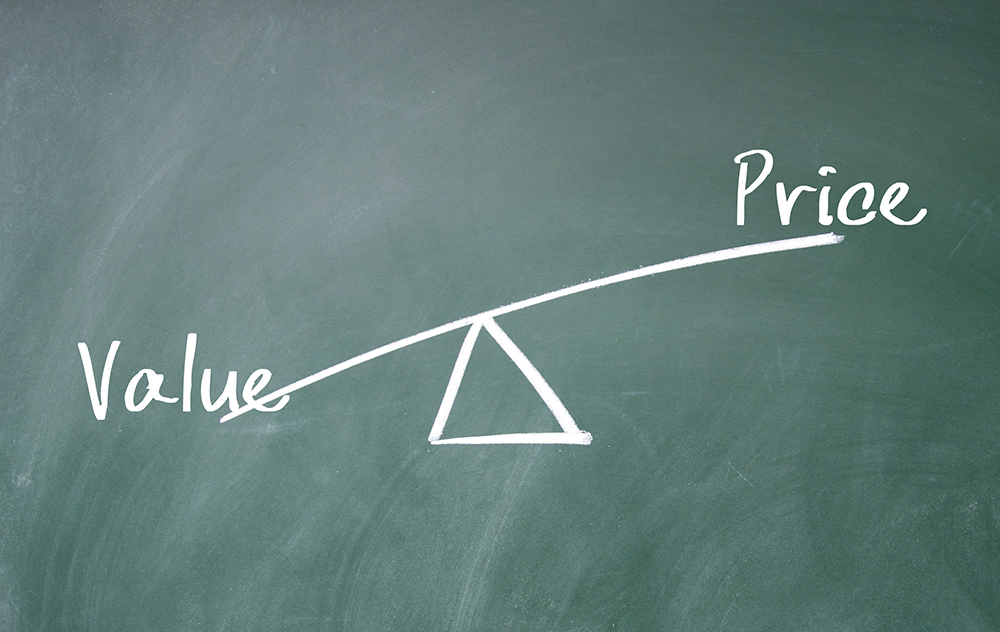Weighing up the ROI of RFID

Most retail managers are aware of the benefits that employing RFID electronic article surveillance (EAS) will offer their shop front.
From item tracking to increased security and streamlined inventory analysis, this technology has a wealth of promise in managing a shop front as well as preventing loss. But, as with any investment, the benefits have to be weighed against the cost.
So how do you know when your RFID will pay itself off and go about measuring the potential return on your investment? Here’s a guide to measuring ROI in relation to RFID.
RFID attributes
RFID is widely regarded as the technology of the present and the future. With its ability to track items anywhere at any time, it decreases time spent on inventory counting, streamlines store management and assists in the battle against retail shrink. It’s also linked with a host of features that enable the new retail frontier of customer engagement such as Smart Mirrors.
Critically, RFID has the capability of being incorporated into many current EAS systems, so let’s look at the cost and ROI.
Measuring ROI
As with any analysis of ROI, you’re looking to address a number of questions when considering RFID. These include:
- What type of analysis shall be used to gauge the existing state of affairs?
- What are the financial costs of this project?
- What are the immediate benefits?
- What other benefits will the project offer?
- How long will it take before the costs are recovered?
- Will the project turn a profit? If so, how much?
Put simply, gauging the ROI is about determining the current financial cost of inefficiency and loss, against the price of implementing RFID, and understanding the timeline in which implementing RFID technology will be recouped.
Understand existing inefficiency
The key reason many retailers embrace RFID is to address existing inefficiency in a business.
These inefficiencies may relate to:
- Out of stock events
- Stock loss due to theft
- Inventory handling costs from delivery to reconciliation
So if you’re looking to expend money to solve this problem, work out what it’s already costing you in time and money.
As RFID affects a number of areas of any retail operation, you’ll need to consult with a series of sectors including sales, purchasing, supply chain, store management, out of stock data, and stock loss.
Not only is this about gathering data, it’s also about gaining an insight, so talk with employers about the actual time it takes them to order, count stock, deal with theft, and how often they are telling customers items are out of stock.
ROI is a pure numbers game, so you’ll need this complete picture of your enterprise resource planning data to indicate your current loss, time and staff cost, and inefficiencies that may benefit from RFID.
Don’t assume
Just as industry standards may not reflect your store operation, there will be a difference in data on a store-by-store basis, even within a chain. By gathering the unique data from each store you have a better understanding of the hours spent handling and counting stock, along with items lost to theft, and lost sales due to out of stock incidents.
This also gives you an understanding of the resources required for each store when it comes to ordering, inventory handling, deliveries and replenishment.
Map things out
Once you’ve identified the data, and looked at different stores and operations, map it out. How many staff and how much time is spent handling inventory? What procedures are currently in place and how many hours do the methods used equate to? What is the staffing cost of this? How many sales are lost due to out of stock scenarios, and what’s the exact cost of item theft?
Together this data gives you the ability to equate your current stock handling and loss to an actual cost.
Choosing the right RFID
Armed with information about your operation, employee numbers and the unique challenges in your business, you will now have a greater insight into which RFID technology may suit you and the benefits you stand to see.
Some retailers will implement RFID just to speed up inventory counting, reordering and theft protection, while others may seek to use RFID for customer engagement.
What exactly is your operation hoping to achieve, by when? You can look for an ROI based on specific factors like man hours counting stock, or with a long-term view like projected sales from better customer engagement. If you’re considering linking your RFID to other technology for customer engagement purposes what additional costs would this incur?
When considering cost and benefit, don’t forget to factor in tax incentives like depreciation or conversely any maintenance and recurring costs that may go above your current EAS system.
Investing in new technology requires insight, analysis and understanding with a clear view of what you hope to achieve and the timeframe in which you hope to achieve it.
When the benefits clearly outweigh your current practices in terms of inefficiency and stock loss, implementing RFID might just prove a cost effective way to tackle a number of issues.